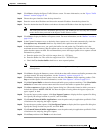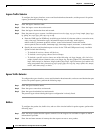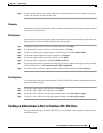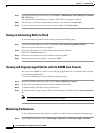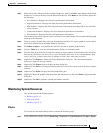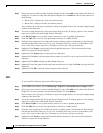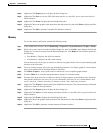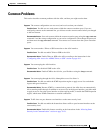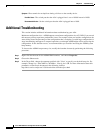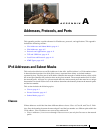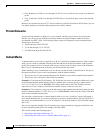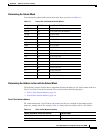
81-17
Cisco ASA 5500 Series Configuration Guide using ASDM
Chapter 81 Troubleshooting
Common Problems
Common Problems
This section describes common problems with the ASA, and how you might resolve them.
Symptom The context configuration was not saved, and was lost when you reloaded.
Possible Cause You did not save each context within the context execution space. If you are
configuring contexts at the command line, you did not save the current context before you changed
to the next context.
Recommended Action Save each context within the context execution space using the copy start run
command. Load the startup configuration as your active configuration. Then change the password
and then enter the copy run start command. You cannot save contexts from the system execution
space.
Symptom You cannot make a Telnet or SSH connection to the ASA interface.
Possible Cause You did not enable Telnet or SSH to the ASA.
Recommended Action Enable Telnet or SSH to the ASA according to the instructions in the
“Configuring ASA Access for ASDM, Telnet, or SSH” section on page 40-1.
Symptom You cannot ping the ASA interface.
Possible Cause You disabled ICMP to the ASA.
Recommended Action Enable ICMP to the ASA for your IP address using the icmp command.
Symptom You cannot ping through the ASA, although the access list allows it.
Possible Cause You did not enable the ICMP inspection engine or apply access lists on both the
ingress and egress interfaces.
Recommended Action Because ICMP is a connectionless protocol, the ASA does not automatically
allow returning traffic through. In addition to an access list on the ingress interface, you either need
to apply an access list to the egress interface to allow replying traffic, or enable the ICMP inspection
engine, which treats ICMP connections as stateful connections.
Symptom Traffic does not pass between two interfaces on the same security level.
Possible Cause You did not enable the feature that allows traffic to pass between interfaces at the
same security level.
Recommended Action Enable this feature according to the instructions in the “Allowing Same
Security Level Communication” section on page 14-21.



